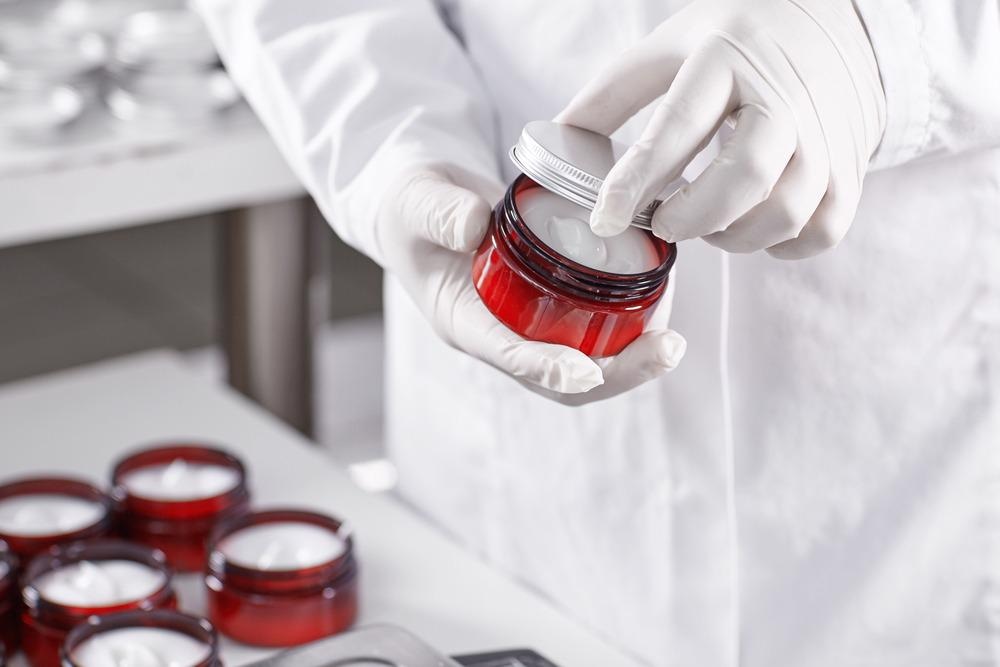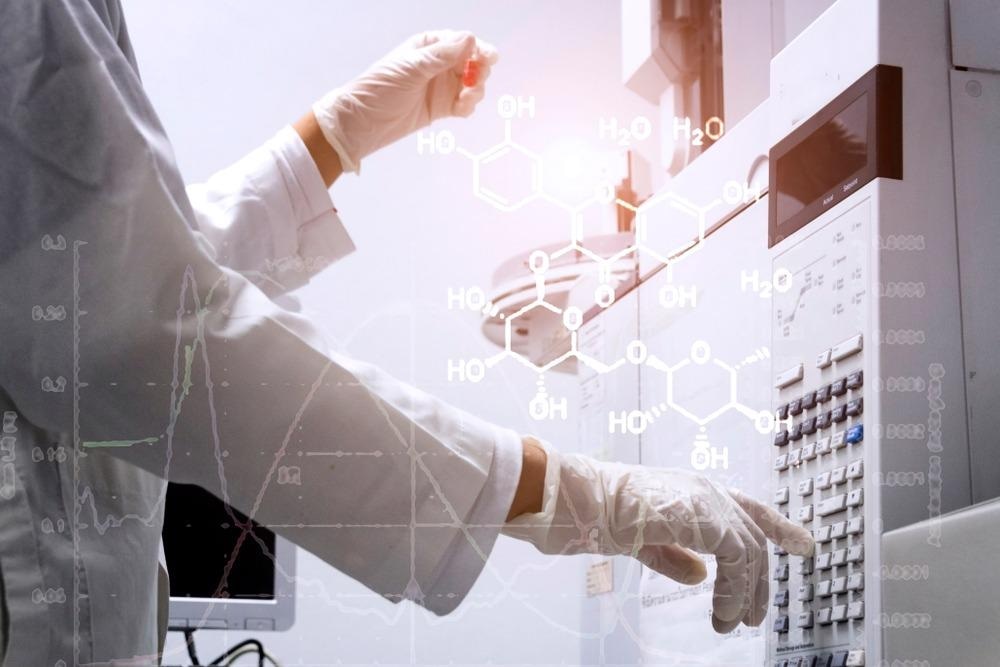To ensure the safety, quality, and efficacy of cosmetics, they are highly regulated with stringent labeling requirements and permissible ingredient allowances. As such, a wide range of analytical techniques are used to accurately characterize and quantify their components.

Image Credit: WAYHOME studio/Shutterstock.com
Cosmetics have been used for millennia to cleanse, protect, or enhance a person’s appearance. Today, their formulations have progressed far from the mineral pigments and natural dyes commonly used in ancient Egypt, and now they offer an immense variety of products utilizing thousands of ingredients.
The Need for Regulation and Analytical Methods
Although the inclusion of toxic chemicals and heavy metals in cosmetic products may seem like matters of the distant past, harmful substances are still found in the products of today. From carcinogenic BHA (Butylated Hydroxyanisole) in lipsticks to toxic mercury in mascaras, these substances can be carried into a product as contaminants, by-products of the manufacturing process, or sometimes as intentional ingredients (Bocca et al., 2014; Khan and Alam, 2019).
The identification of such substances is central to the various regulatory frameworks enforced across the globe for products on the market and their principal purpose of assuring consumer safety. The analytical techniques required to do so have had to develop like the products themselves, and today comprise of highly sensitive, rapid, and robust methods.
What Techniques are Used?
Whilst techniques often differ according to the product being tested and the analytes in question, they can be broadly classified as chromatography and related techniques (such as electrophoresis), spectroscopy, and others. They may be used in conjunction with each other or with general separation techniques, such as fractional precipitation, distillation, liquid-liquid extraction, and centrifugal separation.
Chromatographic and Related Techniques
Chromatography separates the components of a mixture by their distribution between two phases, one of which is a generally immobile substance (the stationary phase) while the other is a fluid or gas (the mobile phase) that percolates through or over the stationary phase.
Variants of this technique are some of the most commonly used analytical methods for cosmetic products and include liquid chromatography (where the mobile phase is a liquid), high-performance liquid chromatography (where the liquid mobile phase is under high pressure), gas chromatography (where the mobile phase is a gas), and ion chromatography (where an ion-exchange mechanism is used to separate the analytes based on their respective charges).
For example, ion chromatography has been proven to be a fast and sensitive analytical method for simultaneously determining traces of water-soluble heavy metals in products such as eye shadows, eyeliners, lipsticks, mascaras, and foundations.
An alternative but related analytical technique is electrophoresis, where the mixture components are separated by their differing rates of migration in an electric field. Although less common in the cosmetics industry, this technique’s compatibility with automation, short analysis time, high resolution, low consumption of reagents, and relatively low equipment costs, mean that its use is growing.

Image Credit: Ropisme/Shutterstock.com
For example, Xie et al., (2014) used capillary electrophoresis to great effect in determining thioglycolic acid levels, which can exhibit reproductive toxicity in sufficient quantities in hair-treatment products and depilatory creams.
Spectroscopic Techniques
Spectroscopic techniques refer to those employing electromagnetic radiation to interact with matter and thus probe certain features of a sample. Although they are generally of poorer performance than chromatographic methods in terms of sensitivity and accuracy, they can be carried out faster and more cost-effectively.
This is demonstrated by Deconinck et al., (2014), where infrared spectroscopy was used in conjunction with the attenuated total reflectance sampling technique to detect and quantify dangerous whitening agents (including corticosteroids, hydroquinone, and tretinoin) in cosmetic creams, lotions, and soap bars. The method required no sample preparation or laboratory access and so was hypothesized to be a highly advantageous screening method in customs or as a quality control measure in mass manufacturing.
Other Techniques
Of the other analytical techniques used on cosmetic products, mass spectrometry is one of the most popular and capable. This technique measures the mass-to-charge ratio of ions in a sample which can then be used to identify, quantify, and chemically analyze its components with considerable accuracy, sensitivity, and specificity. It is usually coupled with gas or liquid chromatography depending on the physicochemical properties of the target analytes.
Celeiro et al., (2021a) investigated both method combinations for the determination of 57 target compounds in moisturizing hand creams and shower gels. Achieving high levels of accuracy and precision and low limits of detection, the methods were confirmed suitable for cosmetic control and regulation enforcement laboratories.
More from AZoM: A Closer Look at Thin Film Evaporation Deposition Techniques
Future Trends
In recent years, particular attention has been paid to the development of simple, sustainable, and environmentally friendly sample preparation methods which are required before techniques such as gas or liquid chromatography. These methods are becoming increasingly time-intensive and requiring large amounts of organic solvents as the matrix complexity of cosmetic products continues to advance.
Celeiro et al., (2021b) predicts this development to occur in two ways: the miniaturization of conventional procedures allowing a reduction in organic solvent and reagent usage, and the development of sorbent- and liquid-based microextraction technologies allowing a high analyte enrichment and low organic solvent usage.
Examples of these directions include the simplistic solid-phase microextraction (SPME) technique and the sorbent-based stir bar sorptive dispersion microextraction (SBSDME) technique.
References and Further Reading
Bocca, B., Pino, A., Alimonti, A. and Forte, G., 2014. Toxic metals contained in cosmetics: A status report. Regulatory Toxicology and Pharmacology, 68(3), pp.447-467 https://pubmed.ncbi.nlm.nih.gov/24530804/
Celeiro, M., Rubio, L., Garcia-Jares, C. and Lores, M., 2021a. Multi-Target Strategy to Uncover Unexpected Compounds in Rinse-Off and Leave-On Cosmetics. Molecules, 26(9). https://www.mdpi.com/1420-3049/26/9/2504
Celeiro, M., Garcia-Jares, C., Llompart, M. and Lores, M., 2021b. Recent Advances in Sample Preparation for Cosmetics and Personal Care Products Analysis. Molecules, 26(16). https://www.mdpi.com/1420-3049/26/16/4900
Deconinck, E., Bothy, J., Desmedt, B., Courselle, P. and De Beer, J., 2014. Detection of whitening agents in illegal cosmetics using attenuated total reflectance-infrared spectroscopy. Journal of Pharmaceutical and Biomedical Analysis, 98, pp.178-185. https://www.sciencedirect.com/science/article/pii/S0731708514002519
Khan, A. and Alam, M., 2019. COSMETICS AND THEIR ASSOCIATED ADVERSE EFFECTS: A REVIEW. Journal of Applied Pharmaceutical Sciences and Research, 2(1), pp.1-6. https://www.researchgate.net/publication/332243856_COSMETICS_
Lee, S., Jeong, H. and Chang, I., 2009. Simultaneous determination of heavy metals in cosmetic products. J. Soc. Cosmet. Scientists Korea, 34(1), pp.57-62.
Salvador, A. and Chisvert, A., 2007. Analysis of Cosmetic Products. Amsterdam: Elsevier Science, pp.72-82.
Xie, N., Ding, X., Wang, X., Wang, P., Zhao, S. and Wang, Z., 2014. Determination of thioglycolic acid in cosmetics by capillary electrophoresis. Journal of Pharmaceutical and Biomedical Analysis, 88, pp.509-512. https://www.researchgate.net/publication/258252818_Determination_of_thioglycolic_acid_
Disclaimer: The views expressed here are those of the author expressed in their private capacity and do not necessarily represent the views of AZoM.com Limited T/A AZoNetwork the owner and operator of this website. This disclaimer forms part of the Terms and conditions of use of this website.